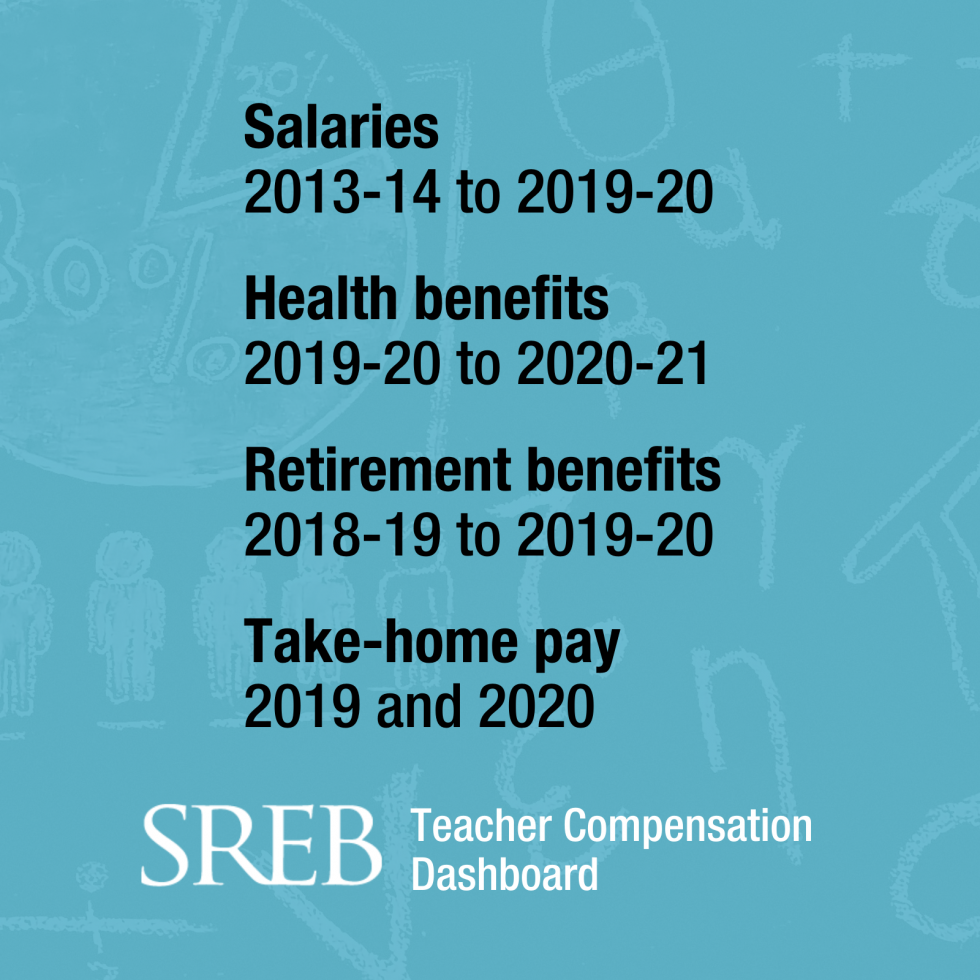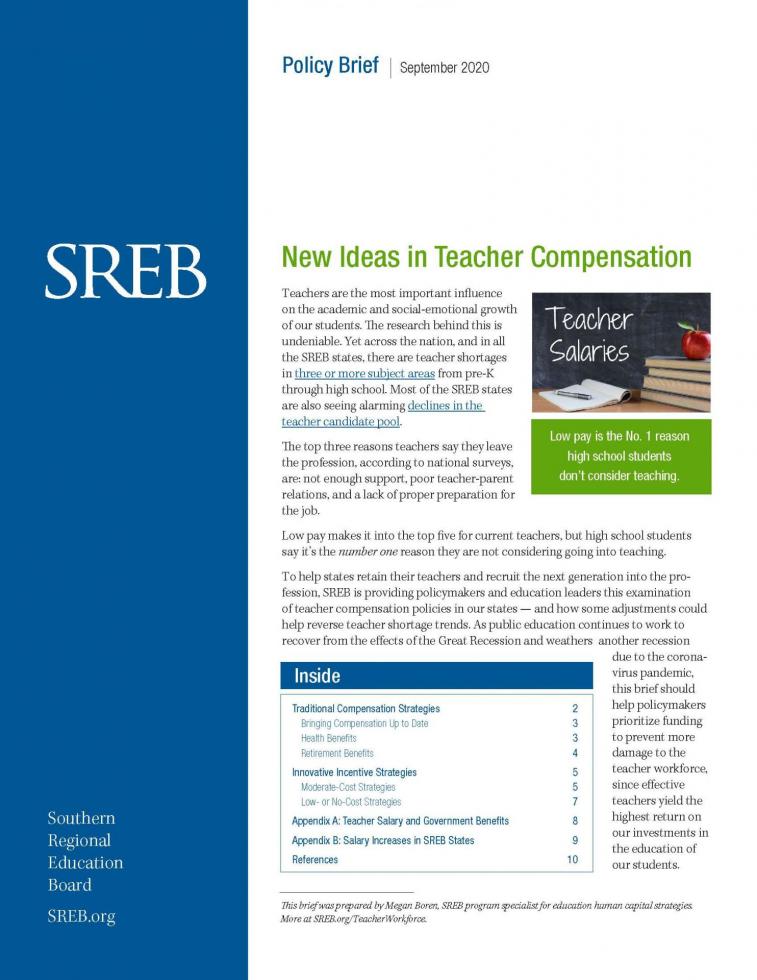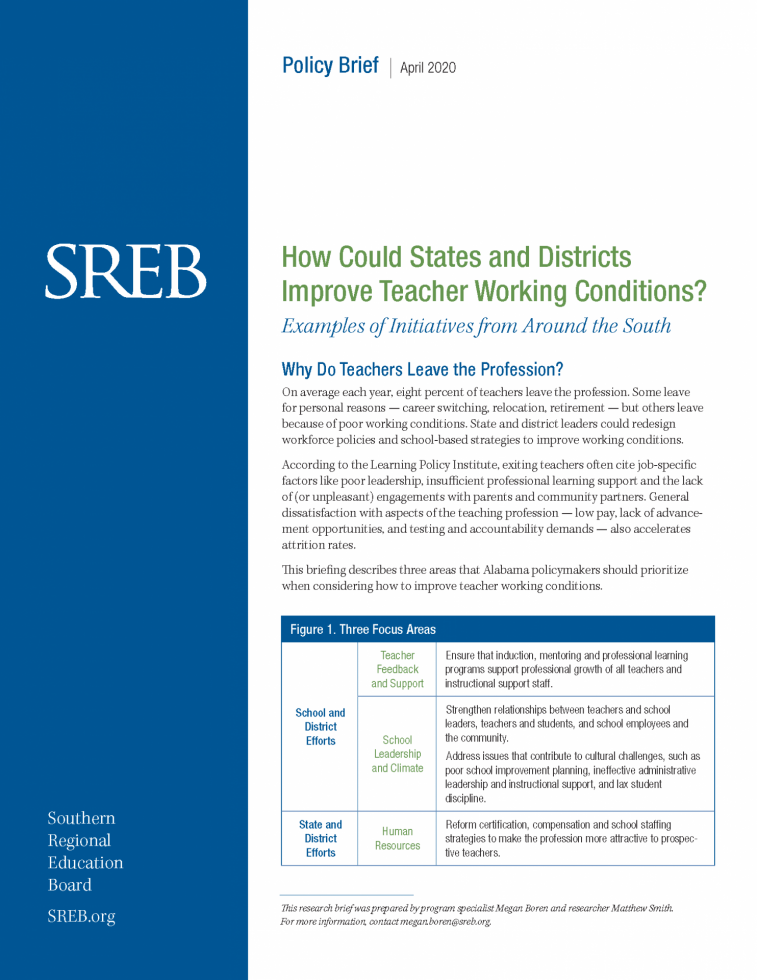Topic: Educator Compensation
Educator Compensation
Insufficient compensation is a key contributing factor as to why many states have trouble attracting and retaining a strong P-12 educator workforce. Not only is inadequate pay one of the top reasons teachers cite for choosing to leave, it is also one of the top reasons prospective teachers identify for ultimately choosing not to enter the profession in the first place.
Teachers consistently earn significantly less than other college-educated workers — in the SREB region, the “teacher wage gap” is 25.3%. Teachers in the SREB region make 15% less than the national average, and the average school leader in the South makes 9% less than the national average. Early childcare educators make an average of $20,000 to $30,000 less than K-12 teachers.
View the latest Educator Compensation Dashboard*
The newly revised Educator Compensation Dashboard features state-by-state annual data for the South on average compensation packages to teachers and leaders, including salaries, retirement benefits, health benefit options and calculations on typical take-home pay for teachers. The dashboard now also contains salary information for early childcare workers.
What do strong teacher compensation systems look like?
- Move away from traditional “step and lane” salary schedules that are based solely on degree level and years of service, as these do not consistently correlate with strong teaching. Instead, create a new salary structure that is connected to a tiered licensure system. This licensure system should be based on a combination of inputs, including degrees, years of experience, and teachers’ growth and impact. This aligned licensure system should also allow teachers to advance through as they grow their skills, knowledge and competencies.
- Reward teachers’ growth and leadership. In alignment with the tiered licensure system, give strong teachers various options for advanced roles and responsibilities that come with higher base salaries.
- Embed cost of living raises and licensure renewal raises, so wages do not stay stagnant for teachers at any level.
- Keep an eye on take-home pay — make sure that premiums and retirement contributions are affordable and still leave teachers with a living net wage.
- Explore how to improve the holistic professional compensation package, beyond just salary. For example, examine options for health and retirement benefits to find places to improve.
How SREB supports teacher compensation policies
SREB publishes data, analyzes policies, and tracks state proposals for changes to PreK-12 educator compensation. We also work with states directly to identify innovative approaches to compensation structures and to improve upon other educator retention strategies.
Educator Insights on How to Save the Teaching Profession
Educators are at the heart of serving students—and they have ideas that can transform their own profession. At the SREB Summer Conference, we asked teachers, coaches, counselors and administrators from around the South a simple but powerful question: What would it take to make teaching more attractive and sustainable? Through on-camera interviews, focus groups, and surveys, educators shared their honest perspectives on the challenges they face today and their solution ideas for the future.













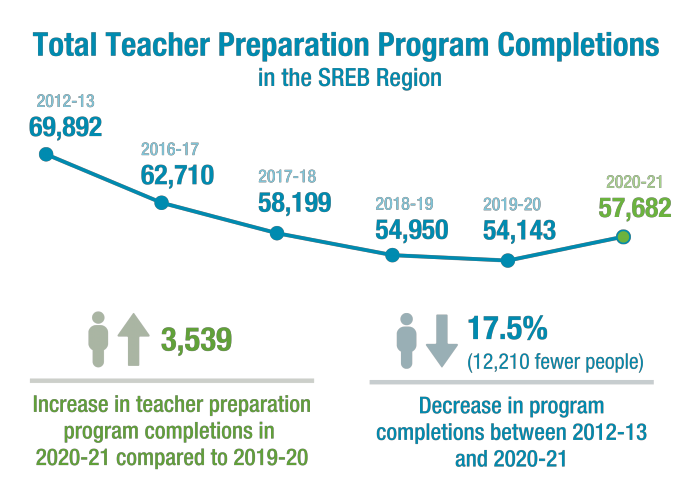
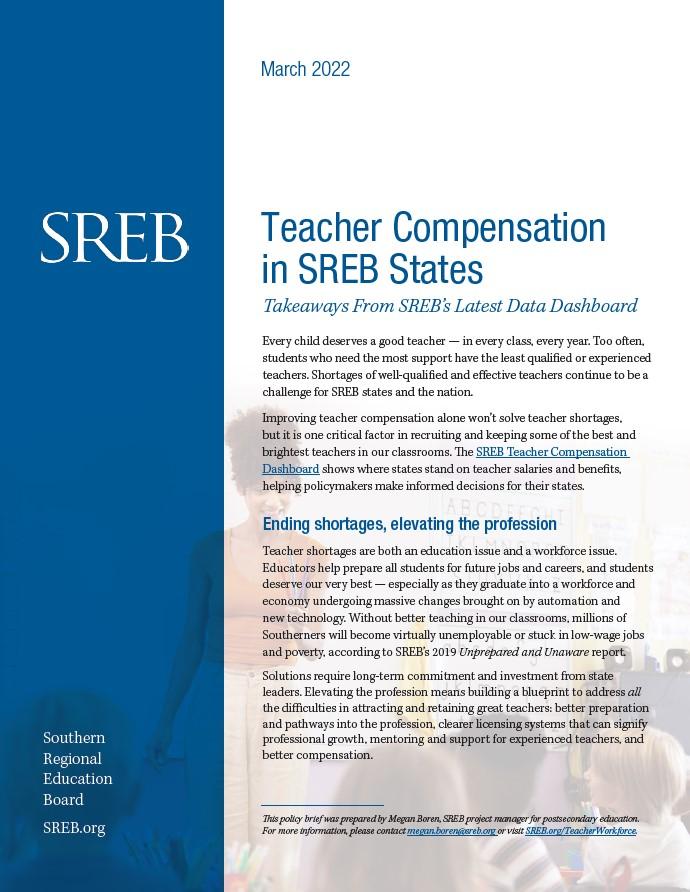
 A summary of which state legislatures in the region took action to increase teacher salaries in recent years.
A summary of which state legislatures in the region took action to increase teacher salaries in recent years.